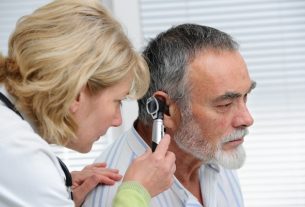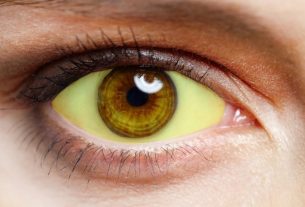Oxyuriasis is a verminosis caused by the parasite Enterobius vermicularispopularly known as pinworm, which can be transmitted through contact with contaminated surfaces, eating food contaminated with eggs or inhaling eggs dispersed in the air, as they are quite light.
Oxyuriosis, also called enterobiosis, causes symptoms such as intense itching in the anus, nausea, vomiting and abdominal pain, for example.
Oxyuriasis is very common in children, and it is important that the pediatrician or general practitioner is consulted so that the best treatment can be indicated, which must be carried out by the infected person and the family.

Main symptoms
The main symptoms of oxyuriasis are:
- Intense itching in the anus, especially at night;
- Nausea;
- Vomiting;
- Stomach ache;
- Intestinal colic;
- There may be blood in the stool.
The female parasite travels at night to the anal region, where it lays eggs in the region, which causes intense itching, which can interfere with sleep. Learn more about the symptoms of oxyuriasis.
Don’t ignore the signs your body is giving you!
How the diagnosis is made
To diagnose oxyuriasis, the doctor must perform the sticky tape test, also known as the Graham test, to check for the presence of parasite eggs. In addition, stool tests are recommended. Understand how the stool test is performed.
How transmission happens
Pinworm transmission occurs through ingestion of this parasite’s eggs through contaminated food or by putting a dirty hand in the mouth, and this is more common in children between 5 and 14 years old.
Furthermore, it is possible to become contaminated through inhalation of eggs that can be found dispersed in the air, as they are quite light, and contact with contaminated surfaces, such as clothes, curtains, sheets and carpets.
It is also possible for there to be self-infection, which is more common in babies who wear diapers. This is because if the baby is infected, after pooping, he can touch the dirty diaper and put his hand in his mouth, becoming infected again.
Learn more about oxyuriasis and other types of common worms:
How the treatment is carried out
Treatment for enterobiosis is guided by the doctor, who prescribes deworming medications such as Albendazole or Mebendazole, used in a single dose to eliminate the worms and eggs that infect the body. It is still possible to apply an anthelmintic ointment to the anus, such as thiabendazole for 5 days, which helps to enhance the effect of the medicine.
Another option is Nitazoxanide, which targets yet another large number of intestinal parasites, and is used for 3 days. Regardless of the medication used, it is recommended that the test be carried out again to check whether there are still signs of infection and, if so, carry out the treatment again. Understand how enterobiosis is treated.
How to prevent enterobiose
To avoid enterobiosis infection, it is necessary to take simple precautions, such as:
- Have good hygiene habits;
- Cut children’s nails;
- Avoid biting nails;
- Wash the clothes of infected people in hot water to prevent the eggs from being transmitted to other people, as they can remain in the environment for up to 2 weeks.
It is also important to wash your hands whenever you prepare food, and after using the toilet. In this way, in addition to enterobiosis, several other infections caused by worms, amoebas and bacteria can be avoided. Discover other ways to prevent enterobiosis.
Bibliography
- MEDLINEPLUS. Oxyurs . Available at: <https://medlineplus.gov/spanish/pinworms.html#:~:text=Los%20oxiuros%20son%20par%C3%A1sitos%20que,abren%20dentro%20de%20sus%20intestinos.>. Accessed on October 4, 2023

Sign up for our newsletter and stay up to date with exclusive news
that can transform your routine!
Warning: Undefined array key "title" in /home/storelat/public_html/wp-content/plugins/link-whisper-premium/templates/frontend/related-posts.php on line 12
Warning: Undefined array key "title_tag" in /home/storelat/public_html/wp-content/plugins/link-whisper-premium/templates/frontend/related-posts.php on line 13




